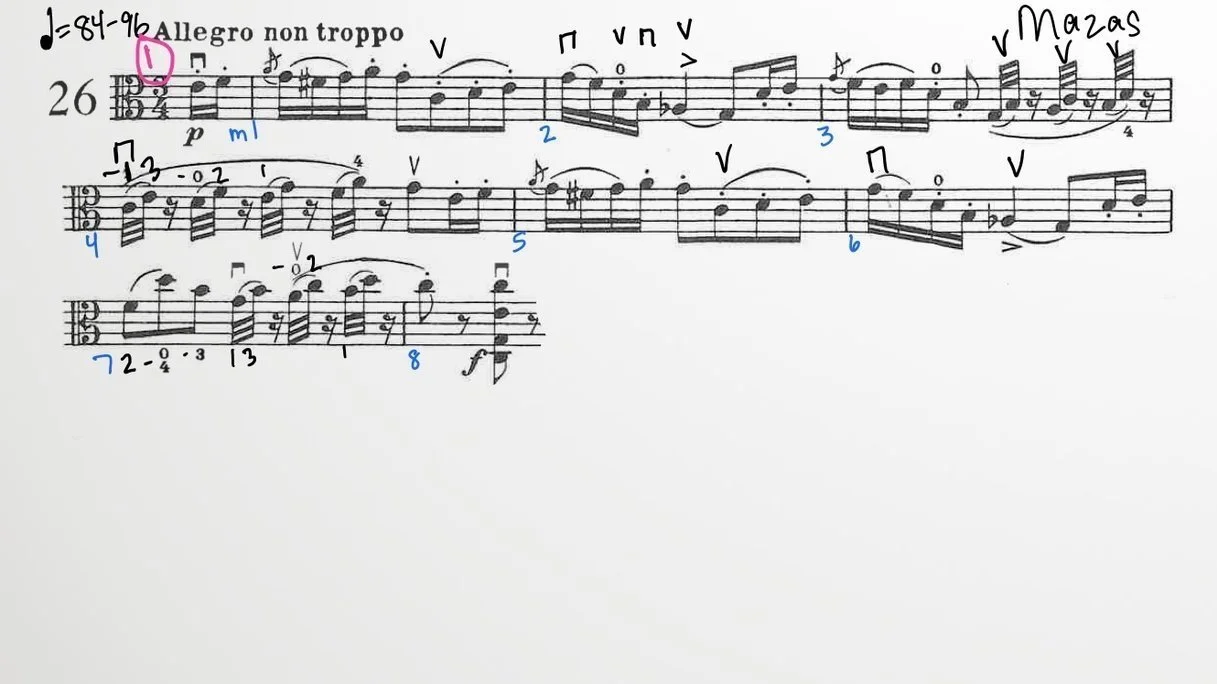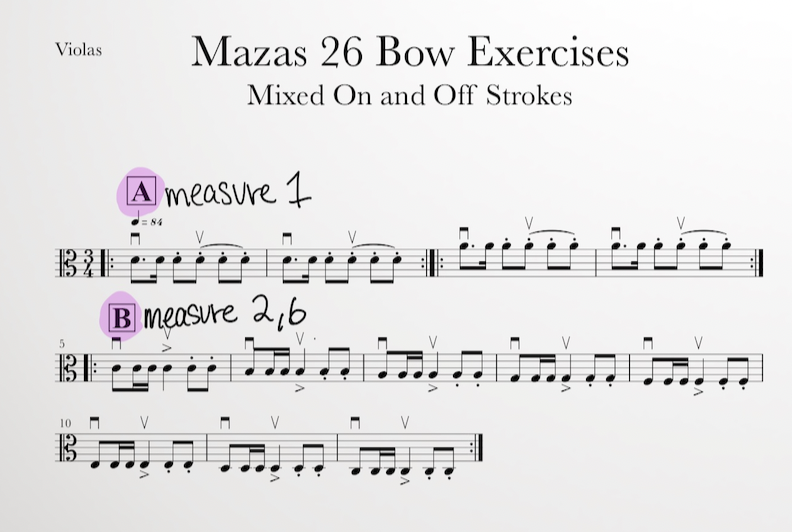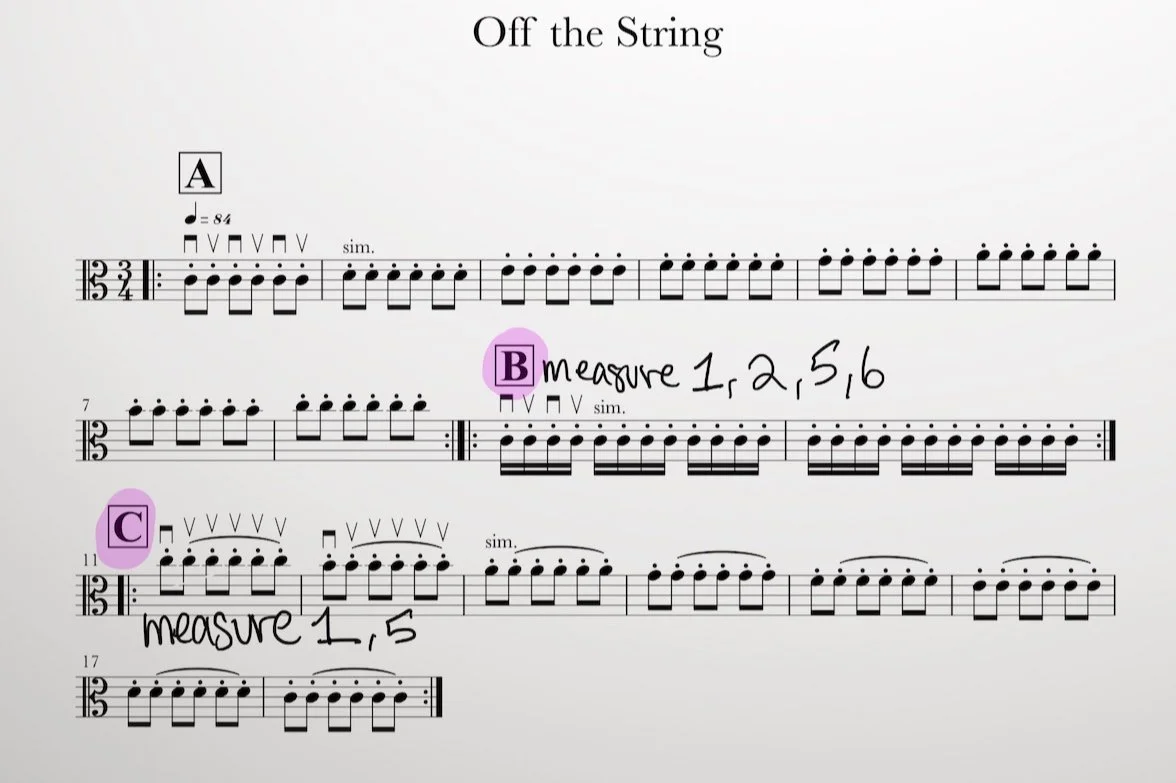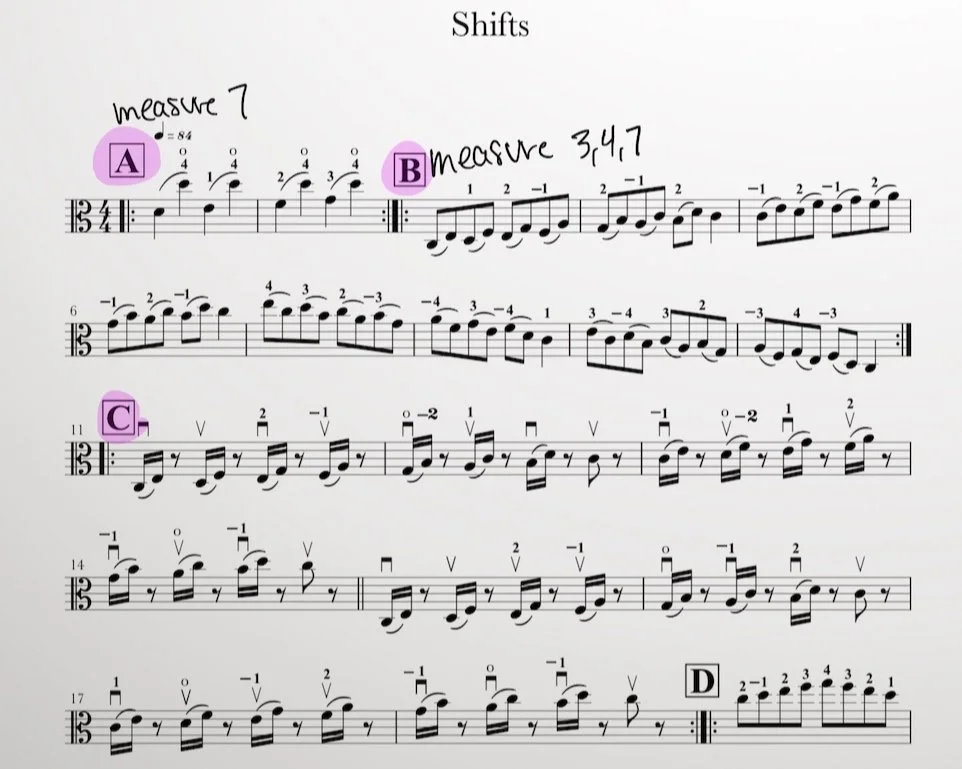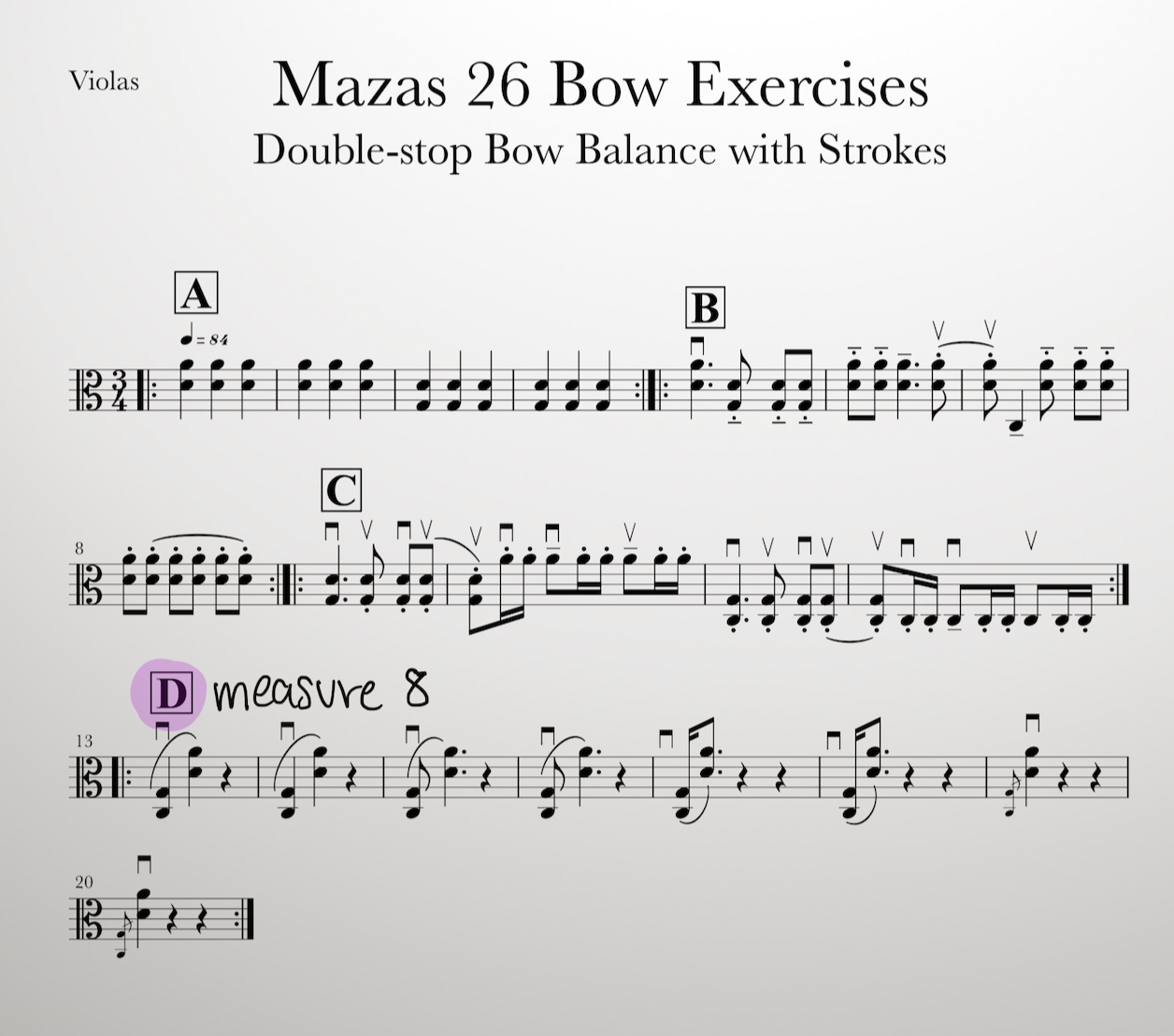IN THIS LESSON
PHRASE 1
MEASURES 1-8 / 33-36 / 87-90
Phrase 1 starts with a playful, spunky character. The sound should be quiet, but the bow strokes should be springy to give the playful affect. Exaggerated accents on accidentals also help the fun, jaunty character stand out.
The music from the first 8 measures is repeated twice more in the piece—at measures 33 and 87—so this practice guide applies to those sections as well.
Be careful to return to piano after accents (measures 2 and 6) or louder features - maintaining quiet playing will keep the character light, and will help us stay nimble.
General practice methods:
Shift during rests whenever possible.
Vibrate everything to feel relaxed and melodic.
Remember to always place the bow so you play from the string.
Phase 1 of Practice:
Practice the phrase without grace notes initially to solidify your understanding of the rhythm.
Start with slow practice - at this point, it may help to play on the string to establish coordination and intonation.
Phase 2 of Practice:
Once you are confident with the rhythm, add the grace notes for the complete effect. They should always come before the beat, so that the primary note is in time with your metronome.
When you transition to playing notes with dots off-the-string, keep the bow nimble and approach this bow stroke change as a tool to add energy. Do not let dots add accents, break up line, or negatively impact intonation - you still need to hear full tone on every note.
Begin speeding up the whole phrase with a metronome. Perfect one measure at a time at this quicker tempo, and string them together until you can play the full phrase at one speed without stopping.
BREAKING DOWN THE PHRASE & REFERENCE GUIDE TO PREVIOUS EXERCISES
Pickup & Measure 1:
The first exercise in Mixed On and Off Strokes addresses the bow coordination for measure 1.
The last three notes are played like Off-The-String exercise C.
Measure 2:
Exercise B from Mixed On and Off Strokes trains the up-bow accent—use just enough bow to avoid getting stuck at the frog.
Reach back accurately from B natural to Ab, as practiced in Exercise B of Extension Hand Frames.
Measure 3-4:
Use a lighter, faster bow on the B on measure 3 beat 2, traveling above the middle of the bow to make room for rest of the measure.
The 3 up-bows and the next 4 down-bows are all On the String, Traveling Strokes. The bow will move as if playing the 8th notes with dots over them from Letter B of the exercise. The left hand will play the pair of 32nd notes quickly before pausing.
The fingerings in measure 4 reference Shifts exercises B + C.
Measure 5 + 6:
Repeat of measure 1 + 2
Measure 7:
Pull a full bow on the downbeat shift, then remain at the tip of the bow to make room for the following up-bows.
Shift from 2nd finger F to play the D string harmonic with your 4th finger [Shifting exercise A], then play the following B with your 3rd finger in third position.
Measure 8:
For the chord on beat 2, practice using Exercise D from Double Stop Bow Balance exercises. Substitute the top set of open strings with pitches E and C, and practice using a full bow and holding the top set of notes so it will have a full sound when you play measure 8
-
Add a short summary or a list of helpful resources here.
